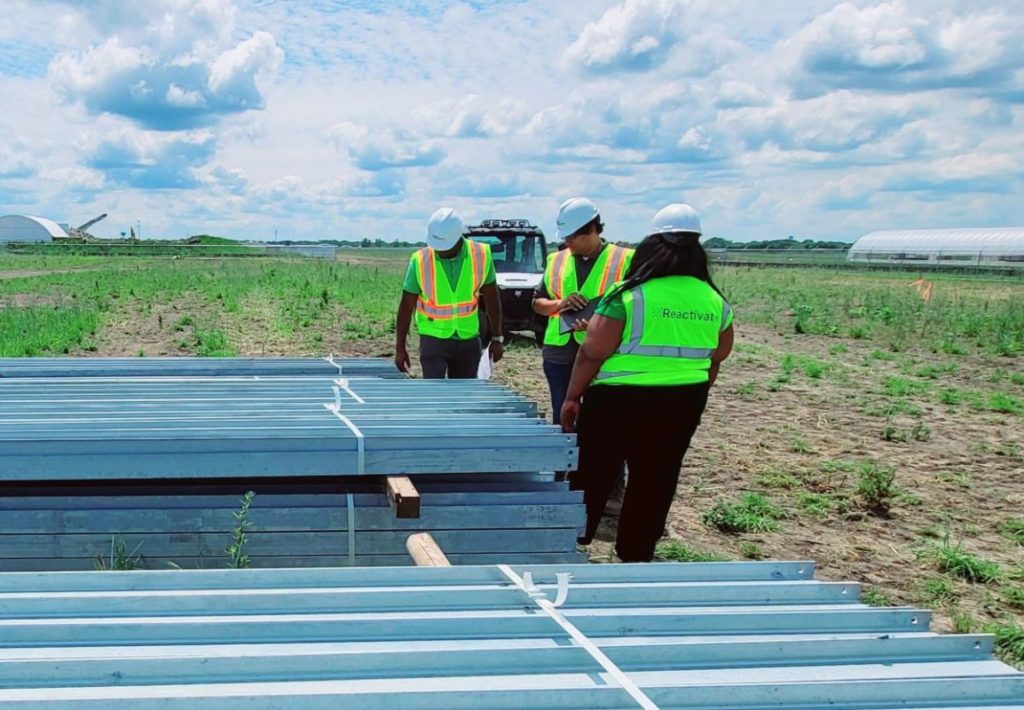
Between 2024 and 2028 the US community solar market is expected to add 7.6GW of new capacity in existing state markets, according to a report from Wood Mackenzie and the Coalition for Community Solar Access (CCSA).
For a third year in a row, community solar added 1GW of solar capacity in 2023, with an 8% average annual growth through 2028.
Unlock unlimited access for 12 whole months of distinctive global analysis
Photovoltaics International is now included.
- Regular insight and analysis of the industry’s biggest developments
- In-depth interviews with the industry’s leading figures
- Unlimited digital access to the PV Tech Power journal catalogue
- Unlimited digital access to the Photovoltaics International journal catalogue
- Access to more than 1,000 technical papers
- Discounts on Solar Media’s portfolio of events, in-person and virtual
Or continue reading this article for free
In two years’ time, the community solar market is expected to pass 10GW of cumulative installed capacity, while by 2028, over 14GW of community solar capacity will be installed across the US.
“Near-term growth in Wood Mackenzie’s national outlook is driven by robust pipelines in existing state markets like New York and Illinois. Longer term, newer state markets support lasting growth as mature markets saturate. Additionally, developers will begin to benefit from the incentives within the Inflation Reduction Act as soon as this year,” said Caitlin Connelly, research analyst and lead author of the report.
New York’s status as one of the leading states for the growth of community solar would not surprise frequent readers of PV Tech, as it recently reached 2GW of installed community solar capacity and has been at the forefront of that market across the US. Earlier this year, New York’s governor, Kathy Hochul, proposed a plan to speed up permitting processes for distributed renewable energy and transmission projects, alongside an initiative to boost access to community solar.
Illinois’ case is slightly different as it currently is the fourth state in terms of installed community solar capacity, as shown in the chart above, although the state’s climate bill passed in 2021 is expected to add 5.8GW of rooftop and community solar capacity by the end of the decade. Earlier this month, community solar developer Reactivate, a joint venture between solar developer Invenergy and investment platform Lafayette Square, partnered with US retailer Walmart and US Bancorp Impact Finance, a subsidiary of financing entity US Bank, to develop seven community solar projects in Illinois and New York, which will mostly benefit low-to-moderate income (LMI) households.
LMI households’ ever growing share
According to the report, the share of LMI subscribers in community solar has continued to increase, from 2% in the second half of 2022 to 10% in the second half of 2023. Community solar comprised up to 40% of total US non-residential solar.
“The early years of community solar served almost exclusively commercial anchor customers; however, stricter LMI requirements in state programmes and the availability of LMI-focused federal incentives are beginning to reveal a more well-rounded, community-focused subscriber profile,” added Connelly.
Due to community solar’s high dependence on state and federal legislation, Wood Mackenzie says there is more room for downside than upside in existing community solar state markets. A positive outlook – bull case – from the base scenario could see an uptick of 13% increase for community solar, while a negative one – bear case – could see a decrease of 38%.
“In addition to the continued growth in existing markets, more than a dozen states are considering bills to create or expand community solar programmes, and there are billions of dollars in federal support to accelerate the pace of community solar deployment,” said Jeff Cramer, CEO of CCSA.
Furthermore, with more and more states prioritising grid flexibility, energy storage is expected to be more quickly implemented in community solar, with attachment rate reaching 62% and 7% in 2022 in Massachusetts and New York, respectively. These two markets have seen the highest activity in community solar-plus-storage, with national deployment in this segment set to increase by 219% by 2028.







